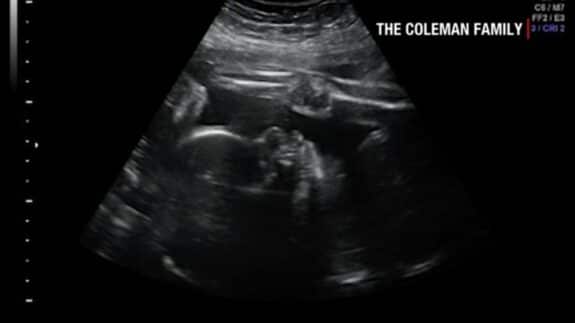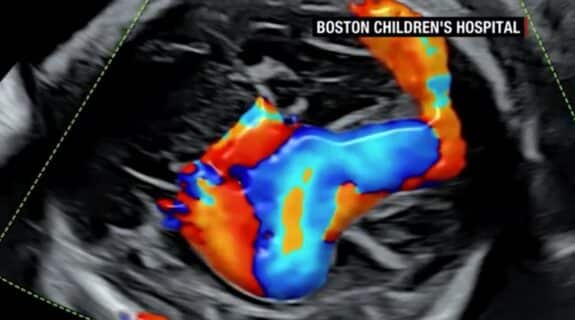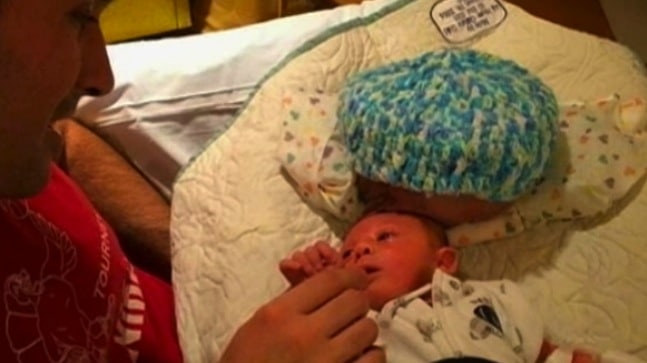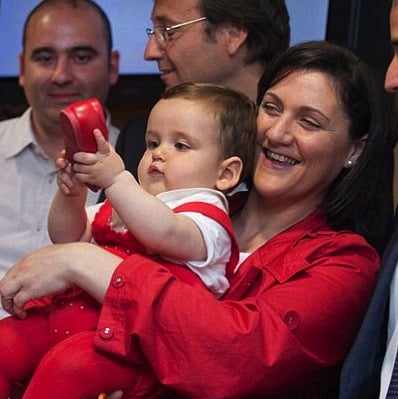Derek and Kenyatta Coleman of Baton Rouge, Louisiana, were pleasantly surprised to learn they would be expecting their fourth child. Kenyatta’s first and second trimester passed by without issue. Genetic testing, blood tests, and ultrasounds all came back with positive results.
“Baby was doing well. The anatomy scan came back unremarkable. All of her biophysical profiles were all unremarkable,” Kenyatta told CNN during an exclusive interview. “We honestly thought that we were in the clear.”
But then, at their 30-week ultrasound, Kenyatta learned some disturbing news. The 36-year-old mother says she can still remember her gynecologist’s concern.
“She shared with me that something wasn’t right in terms of the baby’s brain and also her heart was enlarged,” Kenyatta remembers.
Upon further investigation, doctors determined the baby had VOGM or a vein of Galen. This condition, caused by a malformation in the blood vessel that carries blood from the vein to the heart (the vein of Galen), can cause an overwhelming amount of blood to stress both the vein and the heart. Though infants are often treated for the condition immediately after birth, it is often too late to curb any severe side effects.
“Tremendous brain injuries and immediate heart failure after birth are the two big challenges,” Dr. Darren Orbach, a radiologist at Boston Children’s Hospital and expert in treating VOGM, told CNN. “50 to 60 percent of all babies with this condition will get very sick immediately. And for those, it looks like there’s about a 40 percent mortality.” And those that survive are highly likely to experience severe neurological issues, which can plague them for the entirety of their lives.
Kenyatta and her husband were given an alternative: Brigham and Women’s and Boston Children’s hospitals were conducting a trial. Doctors would perform surgery to correct the condition while their baby was still in-utero. Risks included preterm labor or brain hemorrhage for their baby, but this seemed better than the alternative.
This is far from the first in-utero surgery performed, but this is the first time doctors have done this exact type of procedure. They borrowed the technique from other in-utero cardio surgeries.
According to Dr. Louise Wilkins-Haug, division director of Maternal-Fetal Medicine and Reproductive Genetics at Brigham and Women’s Hospital, he baby is positioned so that its head is facing the mother’s uterine wall. The fetus is then given “a small injection of medication so that it’s not moving and it is also getting a small injection of medication for pain relief.”
From there, surgeons inserted a needle through the fetus’s abdominal wall and then threaded a catheter through the needle. Tiny metal coils then filled the vein to slow the flow of blood, which reduced pressure on the baby’s heart and brain. The Coleman baby showed immediate improvement—scans showed decreased blood pressure in key areas that could have caused trauma to the fetus.
“It was exhilarating at the moment that we had technical success at doing the embolization,” said Orbach.
But the baby wasn’t in the clear just yet. “Will she be able to continuously show progress after? Will she need just additional support after I have her? Will she go into immediate heart failure still?” Kenyatta wondered.
At 34 weeks gestation, Kenyatta began leaking amniotic fluid. Two days later, she gave birth to a 4-pound, 1-ounce baby girl. She and her husband, Derek, decided to name the baby Denver.
“I heard her cry for the first time and that just, I – I can’t even put into words how I felt at that moment,” remembers Kenyatta. “It was just, you know, the most beautiful moment being able to hold her, gaze up on her and then hear her cry.”
“I gave her a kiss and she was just making little baby noises and stuff,” Derek said. “That was all I needed right there.”
Two months later, she continues to grow and thrive. She doesn’t need any medication for heart failure, and all of her neurological exams have come up normal. This is a strong indication that she won’t need any further intervention. Doctors are pleased with the outcome, and they believe the procedure can be used to help other babies with similar conditions.
“In the immediate new newborn period, she was very stable and didn’t need any of the immediate treatments that they typically need, whether it’s placing coils or whether it’s supporting her heart function with medications,” said Wilkins-Haug. “Our hope is that she won’t need any further coils placed.”
“She’s shown us from the very beginning that she was a fighter,” Kenyatta said, “she’s demonstrated … “Hey, I wanna be here.”









